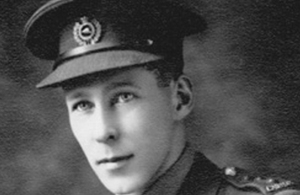WW1 Canadian VC recipient Norman Coulson Mitchell
The story of Canadian First World War Victoria Cross recipient Norman Coulson Mitchell.

Norman Coulson Mitchell [Credit: National Defence Canada]
70 men from Canada received the Victoria Cross, Britain’s highest award for gallantry, during the First World War. As part of the Centenary Commemorations the people of the United Kingdom marked their gratitude to those courageous men by presenting a bronze memorial plaque to their home country engraved with their names. The plaque is now displayed at the British High Commission Ottawa. This archive tells their stories.
Name: Coulson Norman Mitchell
DOB: 11 December 1889
Place of Birth: Winnipeg, Canada
Date of Action: 8 to 9 October 1918
Place of Action: Cambrai, France
Rank: Captain
Regiment: Canadian Engineers, Canadian Expeditionary Force
Coulson Norman Mitchell was born in Winnipeg, Manitoba on 11 December 1889. He graduated from Manitoba University with an engineering degree, and joined the Canadian Expeditionary Force when the war began, as an engineer officer, serving with the 1st Tunnelling Company. He received the Military Cross at Ypes in 1916.
Captain Mitchell received the Victoria Cross for his actions in October 1918 while on a reconnaissance mission near Cambrai, France. His citation reads.
For most conspicuous bravery and devotion to duty on the night of 8th-9th October, 1918, at the Canal de L’Escaut, north-east of Cambrai. He led a small party ahead of the first wave of infantry in order to examine the various bridges on the line of approach and, if possible, to prevent their demolition. On reaching the canal he found the bridge already blown up. Under a heavy barrage he crossed to the next bridge, where he cut a number of ‘lead’ wires. Then in total darkness, and unaware of the position or strength of the enemy at the bridgehead, he dashed across the main bridge over the canal. This bridge was found to be heavily charged for demolition, and whilst Capt. Mitchell, assisted by his N.C.O., was cutting the wires, the enemy attempted to rush the bridge in order to blow the charges, whereupon he at once dashed to the assistance of his sentry, who had been wounded, killed three of the enemy, captured 12, and maintained the bridgehead until reinforced. Then under heavy fire he continued his task of cutting wires and removing charges, which he well knew might at any moment have been fired by the enemy. It was entirely due to his valour and decisive action that this important bridge across the canal was saved from destruction.
After the war Mitchell returned to the engineering profession, and later served in the second world war reaching the rank of Lieutenant-Colonel. He died in 1978. The Canadian Military Engineers named their training school in New Brunswick in his honour.